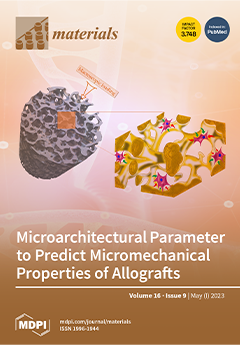Redox materials have been investigated for various thermochemical processing applications including solar fuel production (hydrogen, syngas), ammonia synthesis, thermochemical energy storage, and air separation/oxygen pumping, while involving concentrated solar energy as the high-temperature process heat source for solid–gas reactions. Accordingly, these materials can
[...] Read more.
Redox materials have been investigated for various thermochemical processing applications including solar fuel production (hydrogen, syngas), ammonia synthesis, thermochemical energy storage, and air separation/oxygen pumping, while involving concentrated solar energy as the high-temperature process heat source for solid–gas reactions. Accordingly, these materials can be processed in two-step redox cycles for thermochemical fuel production from H
2O and CO
2 splitting. In such cycles, the metal oxide is first thermally reduced when heated under concentrated solar energy. Then, the reduced material is re-oxidized with either H
2O or CO
2 to produce H
2 or CO. The mixture forms syngas that can be used for the synthesis of various hydrocarbon fuels. An alternative process involves redox systems of metal oxides/nitrides for ammonia synthesis from N
2 and H
2O based on chemical looping cycles. A metal nitride reacts with steam to form ammonia and the corresponding metal oxide. The latter is then recycled in a nitridation reaction with N
2 and a reducer. In another process, redox systems can be processed in reversible endothermal/exothermal reactions for solar thermochemical energy storage at high temperature. The reduction corresponds to the heat charge while the reverse oxidation with air leads to the heat discharge for supplying process heat to a downstream process. Similar reversible redox reactions can finally be used for oxygen separation from air, which results in separate flows of O
2 and N
2 that can be both valorized, or thermochemical oxygen pumping to absorb residual oxygen. This review deals with the different redox materials involving stoichiometric or non-stoichiometric materials applied to solar fuel production (H
2, syngas, ammonia), thermochemical energy storage, and thermochemical air separation or gas purification. The most relevant chemical looping reactions and the best performing materials acting as the oxygen carriers are identified and described, as well as the chemical reactors suitable for solar energy absorption, conversion, and storage.
Full article






